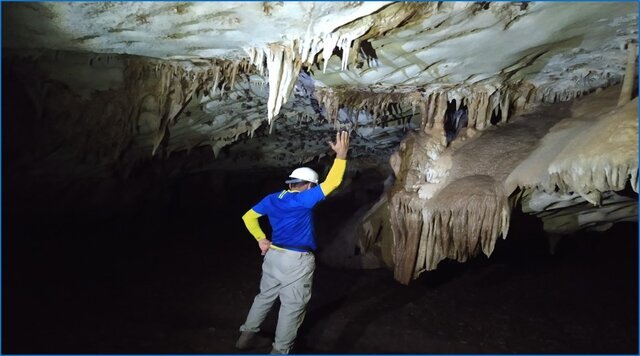Khuzestan’s silent caves, hidden treasures of tourism

TEHRAN-- Khuzestan province has a hidden treasure deep in its mountains; mysterious caves that have remained hidden in the rock and silence for centuries and today could be the key to tourism prosperity and sustainable employment in this land.
More than 70 natural caves have been identified in Khuzestan province to date, each of which has the potential for global introduction and responsible exploitation in the form of scientific and eco-oriented tourism, Mehr news agency reported.
Dezful city holds a special place among them. The mountainous nature of Shahyoun district, proximity to the Dez River, lush landscapes and ancient history of the region have all joined hands to make this region one of the most potential centers of ecotourism in the south of the country.
In the heart of this region, Sezar (Caesar) Cave, with its unique geological structure, has recently captured the attention of environmentalists, tourism activists and public representatives.
It is not just a natural phenomenon, but it can be a leading example of converting natural resources into economic advantage while protecting and respecting the environment; a model that many regions of the country need.
Abbas Papizadeh, an MP representing Dezful in the Iranian parliament, pointed to the latest efforts in the field of tourism development in Shahyoun. “Dezful has the capacity to become one of the country's important tourism hubs due to its special geographical location, proximity to the Dez River, and cultural and natural diversity.”
Fortunately, during a recent visit with the Head of Khuzestan Cultural Heritage Department, the basic issues of the Shahyoun region, including infrastructure problems and ecotourism capacities, were reviewed, he added.
He also said that solving the problem of cellphone coverage, providing lighting for village passages, and increasing the share of water in the village of Lius by strengthening the water supply network are among the items on the agenda.
“In addition, granting government facilities for the development of ecotourism and supporting private investors are among our serious goals in this area.”
Referring to the importance of Sezar Cave, he said: “This cave has been discovered and initially identified in recent years. Funding for the implementation of the research project and its initial studies are being pursued in cooperation with Khuzestan Cultural Heritage Department and transforming this valuable natural monument into a regional geopark is on our agenda.”
Sezar Cave is very important from a geological perspective due to its karst structure and special rock layers. Local experts believe that this cave can form part of the Northern Zagros cave network and be introduced as a special study point on the national geological map.
Initial studies have shown that in some parts of the cave, water pools, natural reliefs and rare species of bats and insects can be seen, indicating its biological richness.
Such features can make Sezar Cave one of the leading geotourism attractions in the south of the country in the future.
Also, Adel Mola, Khuzestan's Department of Environment deputy chief, said that currently, Dezful County has the largest number of identified caves in the province, and five caves, including one cave in Behbahan and several caves in the Shahyoun district of Dezful, are in the first-class category. These caves are of great importance due to their unique structure and special biodiversity, he added.
KD
Leave a Comment